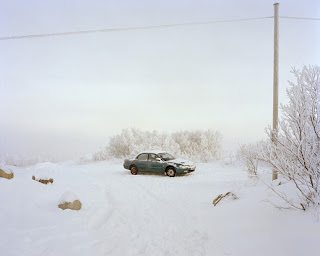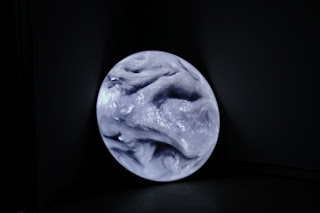Myriorama is a project that consists of landscapes painted on uniform boards that can be matched together to produce panoramic landscape tableaux. These paintings all depict an Arcadian scene and are all painted in an improvised classical style; they all have the same non-determined horizon line. The work invites play as there is no prescribed order in which to arrange these boards. Clark has been painting Myriorama since 1985. This concept comes from a nineteenth century child’s game—myriorama, or in English, the endless landscape.
Myriorama works like the unconscious. It has timeless qualities and a rearrangeability that is similar to the way unconscious thoughts reproduce mixed up perceptual phenomena in memory or dreams. Furthermore, these paintings appear like the background from an Italian Renaissance portrait. This interpretation of Clark's landscapes suggests a metonym for an unacknowledged subject. The possibility of rearrangement incorporated in the artwork also implies a small reminder of this subject. But there is also, I would argue, an obsessional structure to Clark's work that points to a persistent, radical and highly poetic synthesis of latent and manifest content. It is not our place to ask if Clark himself is obsessed by this ongoing body of work but, rather, it is interesting to propose that the artwork's mode has the structure of obsession. Obsession needn't be read as pathological. The way the project uses repetition and rules is what evokes the idea of obsession.
In 1997 Graham Forsyth described Tony Clark as obsessive. The tensions at play in Myriorama have qualities similar to the nature of obsessive rituals. This is most apparent in the fact that they must fit a specific pictorial format. In the case of people who carry out obsessive rituals, usually strict adherence to certain procedures must be fulfilled in order to perform simple everyday tasks. Myriorama follows the logic of a set of rules that enable the process of artistic creativity to be conducted. Each painting in the series must fit together to create a consistent landscape. They all must have a coherent sense of space, volume, atmosphere and perspective. Their shared proportions, in different sizes, are all derived from the golden section. These days the series has a restricted pallet of black, brown, turquoise blue and warm pink. In Myriorama, it seems, the restraints of the rules enable Clark to make work that has a great deal of expressive freedom.
That the project is ongoing, asks some philosophical questions about the nature of an endless landscape—about endlessness. Clark's Myriorama cannot be fully described, though it has a highly recognisable look. Each individual element, each panel, each set, looks distinctively like the rest of Myriorama, yet this look or ideal is never fully resolved. There is an aesthetic false unity in the relations of the parts to the whole. An ideal, in the classical sense of a perfect example, that represents the whole body of work isn't realisable. The opposition between a part and whole corresponds to the other contrasts in Myriorama, rigorous versus mannered, structured versus spontaneous, prescriptive regulations versus an anarchistic streak. These contrasts all have an open-endedness in Clark's work.
Myriorama evokes the timelessness of the unconscious. In the return of Renaissance backgrounds these landscapes have a sense of déjà vu. A moment already past is shown in the style of the work while a moment though not yet realised exists in the false unity of the arrangement. Displacement replaces a notion of an aesthetic absolute. The formation of an obsession takes shape as a way of reconciling the many paradoxical qualities in Myriorama. The radical return of what was old offers renewed creativity.
At Murray White Room
Tim Alves
At Murray White Room
Tim Alves

















